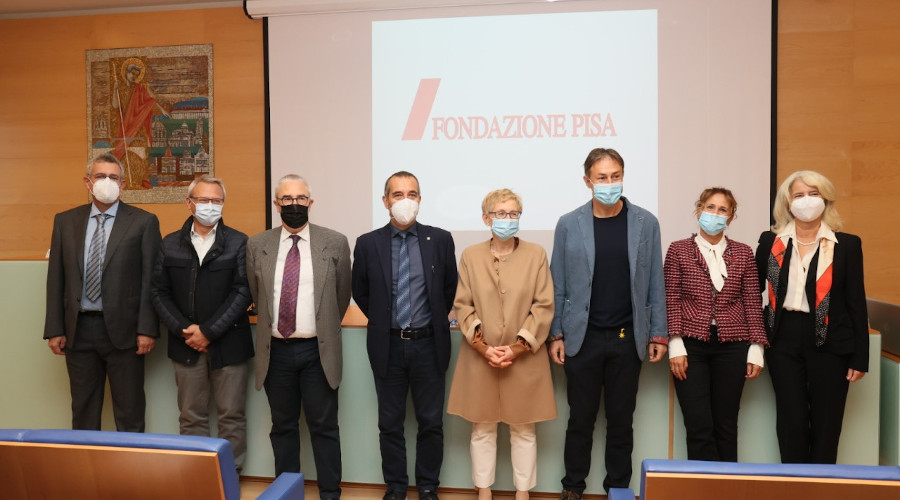 Radiotherapy is a powerful weapon in cancer treatment; it is recommended for 50-60% of cancer patients and many of them are cured. Nevertheless, despite huge technological advances over the past 20 years, it is still limited by radiation-induced toxicity to healthy tissue. Early preclinical studies have shown that irradiation at doses far higher than those currently used, but for shorter times than those currently practised, reduces the toxicity induced by radiation while maintaining equivalent effectiveness in fighting the tumour: a radiobiological effect known as the FLASH effect. The Flash effect has been shown experimentally on animal models: delivering the dose of radiotherapy in fractions of a second (compared to the minutes of conventional radiotherapy) can drastically reduce damage to healthy tissues while maintaining the therapeutic efficacy on the tumour. Exploiting the Flash effect to reduce dose toxicity would, on the one hand, allow the radiation dose to be increased to treat those tumours that still remain incurable and, on the other hand, it would reduce long-term adverse side effects in patients with treatable tumours. Experimental results have so far provided only partial data since experiments have been limited by the use of common accelerators not designed for the specific purpose.
Radiotherapy is a powerful weapon in cancer treatment; it is recommended for 50-60% of cancer patients and many of them are cured. Nevertheless, despite huge technological advances over the past 20 years, it is still limited by radiation-induced toxicity to healthy tissue. Early preclinical studies have shown that irradiation at doses far higher than those currently used, but for shorter times than those currently practised, reduces the toxicity induced by radiation while maintaining equivalent effectiveness in fighting the tumour: a radiobiological effect known as the FLASH effect. The Flash effect has been shown experimentally on animal models: delivering the dose of radiotherapy in fractions of a second (compared to the minutes of conventional radiotherapy) can drastically reduce damage to healthy tissues while maintaining the therapeutic efficacy on the tumour. Exploiting the Flash effect to reduce dose toxicity would, on the one hand, allow the radiation dose to be increased to treat those tumours that still remain incurable and, on the other hand, it would reduce long-term adverse side effects in patients with treatable tumours. Experimental results have so far provided only partial data since experiments have been limited by the use of common accelerators not designed for the specific purpose.
This is the context of the decision that Fondazione Pisa took in autumn 2021 to support and finance the Electron Flash Therapy research project with 1.3 million euros, in order to promote an in-depth study of the FLASH effect. On this topic, a previous agreement was signed by the University of Pisa, which will be the implementing institution of the project, along with the University Hospital of Pisa, INFN and CNR, the Italian National Research Council.
The project’s first stage saw the recent establishment, in Pisa, of the Multidisciplinary Pisan Centre for Clinical Research and Implementation of Flash Radiotherapy (CPFR). The centre combines the various leading scientific and clinical experience and expertise in the region in a synergic manner and involves the University of Pisa, the University Hospital of Pisa, CNR – Institute of Neuroscience, and the INFN Pisa division. The CPFR centre was established as part of CISUP (Centre for the Integration of Instrumentation of the University of Pisa) and is a candidate to become an international reference centre on a topic of absolute importance, both from the scientific point of view as well as from a clinical perspective.
One of the few in the world, the Electron Flash Therapy project envisages the use of a specific accelerator for flash radiotherapy, together with the possibility of bringing together multidisciplinary expertise in a single centre, in order to design and execute experiments that accurately evaluate the effects, so that, in the future, the FLASH effect can become part of the clinical routine. As a fundamental step for the development of the project, the CPFR is equipping itself with a specially designed and developed linear electron accelerator (LINAC): it will be equipped with innovative elements such as a triode electron gun and an accurate system for monitoring the beam fluence and energy. In this way it will be possible to carry out reproducible experiments on preclinical models, as a function of fundamental parameters such as, for example, the dose rate, the dose per pulse, the irradiation time, the irradiated volume.
The new LINAC will allow these parameters to be varied continuously, and independently, within a wide range of values, from those typical of conventional radiotherapy up to typical values of Flash radiotherapy. The results of these multi-parameter studies will be decisive for understanding the mechanism behind the Flash effect. INFN and its Pisa division will participate in research conducted at the CPFR with particular regards to the development of innovative instrumentation for the dosimetry of the FLASH beams at very high doses per pulse, as well as treatment programmes based on computer simulations with Monte Carlo methods. The researchers involved in the experimental activities will collaborate with highly specialised INFN personnel and will benefit from facilities at the forefront of high technologies and scientific computing. The task of following the various phases of the implementation of the research initiative, verifying its good progress, is entrusted to a Control Committee consisting of Arnaldo Stefanini, expert in medical physics, Fabio Beltram, President of the Fondazione Pisana per la Scienza and expert in nanoparticle physics, and Pierfranco Conte of the University of Padua, an internationally renowned oncologist. The ultimate goal is ambitious: take the Electron Flash Therapy project from the research phase to clinical therapy trials as soon as possible.




